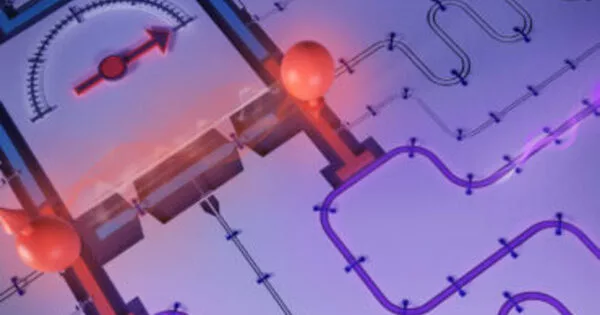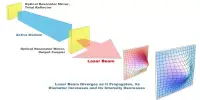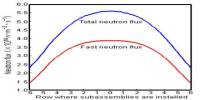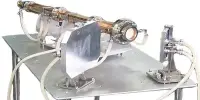One way to strengthen electron-triggered light emission is to increase the density of electrons being emitted. This can be achieved by using a material with a higher electron emission rate, or by increasing the applied electric field, which can accelerate the electrons and increase their density. Another way to strengthen the light emission is to increase the efficiency of the process by which the electrons are converted into light, such as through the use of a phosphor or other light-emitting material. Additionally, using a more reflective or light-transmissive surrounding material can help to enhance the light emission by directing or transmitting more of the emitted light.
Researchers have discovered a way to create much stronger interactions between photons and electrons, resulting in a hundredfold increase in light emission from a phenomenon known as Smith-Purcell radiation. The discovery could have implications for both commercial applications and basic scientific research.
The interaction of electrons with photons of light is central to many modern technologies, from lasers to solar panels to LEDs. However, the interaction is inherently weak due to a significant scale mismatch: Because the wavelength of visible light is about 1,000 times larger than the wavelength of an electron, the way the two things affect each other is limited.
Now, researchers at MIT and elsewhere have come up with an innovative way to make much stronger interactions between photons and electrons possible, in the process producing a hundredfold increase in the emission of light from a phenomenon called Smith-Purcell radiation. The finding has potential implications for both commercial applications and fundamental scientific research, although it will require more years of research to make it practical.
The findings are reported today in the journal Nature, in a paper by MIT postdocs Yi Yang (now an assistant professor at the University of Hong Kong) and Charles Roques-Carmes, MIT professors Marin Soljačić and John Joannopoulos, and five others at MIT, Harvard University, and Technion-Israel Institute of Technology.
If you could actually build electron accelerators on a chip, you could make much more compact accelerators for some of the applications of interest, which would still produce very energetic electrons. That obviously would be huge. For many applications, you wouldn’t have to build these huge facilities.
Marin Soljačić
Using a beam of electrons in conjunction with a specially designed photonic crystal (a slab of silicon on an insulator etched with an array of nanometer-scale holes), the team discovered that they could theoretically predict stronger emission by many orders of magnitude than would normally be possible in conventional Smith-Purcell radiation. In their proof-of-concept measurements, they also observed a hundredfold increase in radiation.
Unlike other approaches to producing sources of light or other electromagnetic radiation, the free-electron-based method is fully tunable – it can produce emissions of any desired wavelength, simply by adjusting the size of the photonic structure and the speed of the electrons. This may make it especially valuable for making sources of emission at wavelengths that are difficult to produce efficiently, including terahertz waves, ultraviolet light, and X-rays.
So far, the team has demonstrated a hundredfold increase in emission using a repurposed electron microscope as an electron beam source. However, they claim that the underlying principle could potentially enable far greater enhancements using devices specifically designed for this function.
The method is based on a concept known as flatbands, which has been widely investigated in recent years for condensed matter physics and photonics but has never been applied to influencing the fundamental interaction of photons and free electrons. The underlying principle involves momentum transfer from an electron to a group of photons, or vice versa. Whereas conventional light-electron interactions rely on producing light at a single angle, the photonic crystal is tuned in such a way that it enables the production of a whole range of angles.

The same process could also be used in the opposite direction, using resonant light waves to propel electrons, increasing their velocity in a way that could potentially be harnessed to build miniaturized particle accelerators on a chip. These might ultimately be able to perform some functions that currently require giant underground tunnels, such as the 30-kilometer-wide Large Hadron Collider in Switzerland.
“If you could actually build electron accelerators on a chip,” Soljačić says, “you could make much more compact accelerators for some of the applications of interest, which would still produce very energetic electrons. That obviously would be huge. For many applications, you wouldn’t have to build these huge facilities.”
According to Roques-Carmes, the new system could also provide a highly controllable X-ray beam for radiotherapy purposes. According to the researchers, the system could be used to generate multiple entangled photons, a quantum effect that could be useful in the development of quantum-based computational and communications systems. “You can use electrons to couple many photons together, which is a significantly difficult problem if you use a purely optical approach,” Yang says. “That is one of our most exciting future directions.”
Much work remains to translate these new findings into practical devices, Soljačić cautions. It may take some years to develop the necessary interfaces between the optical and electronic components and how to connect them on a single chip, and to develop the necessary on-chip electron source producing a continuous wavefront, among other challenges.
“This is exciting because it is a very different type of source,” Roques-Carmes adds. While most light-generation technologies are limited to very specific color or wavelength ranges, and “it’s usually difficult to move that emission frequency. It’s completely adjustable here. You can change the emission frequency simply by changing the velocity of the electrons. That makes us excited about the potential of these sources. Because they’re different, they offer new types of opportunities.”
But, Soljačić concludes, “in order for them to become truly competitive with other types of sources, I think it will require some more years of research. I believe that with serious effort, they could compete in at least some areas of radiation in two to five years.”
















